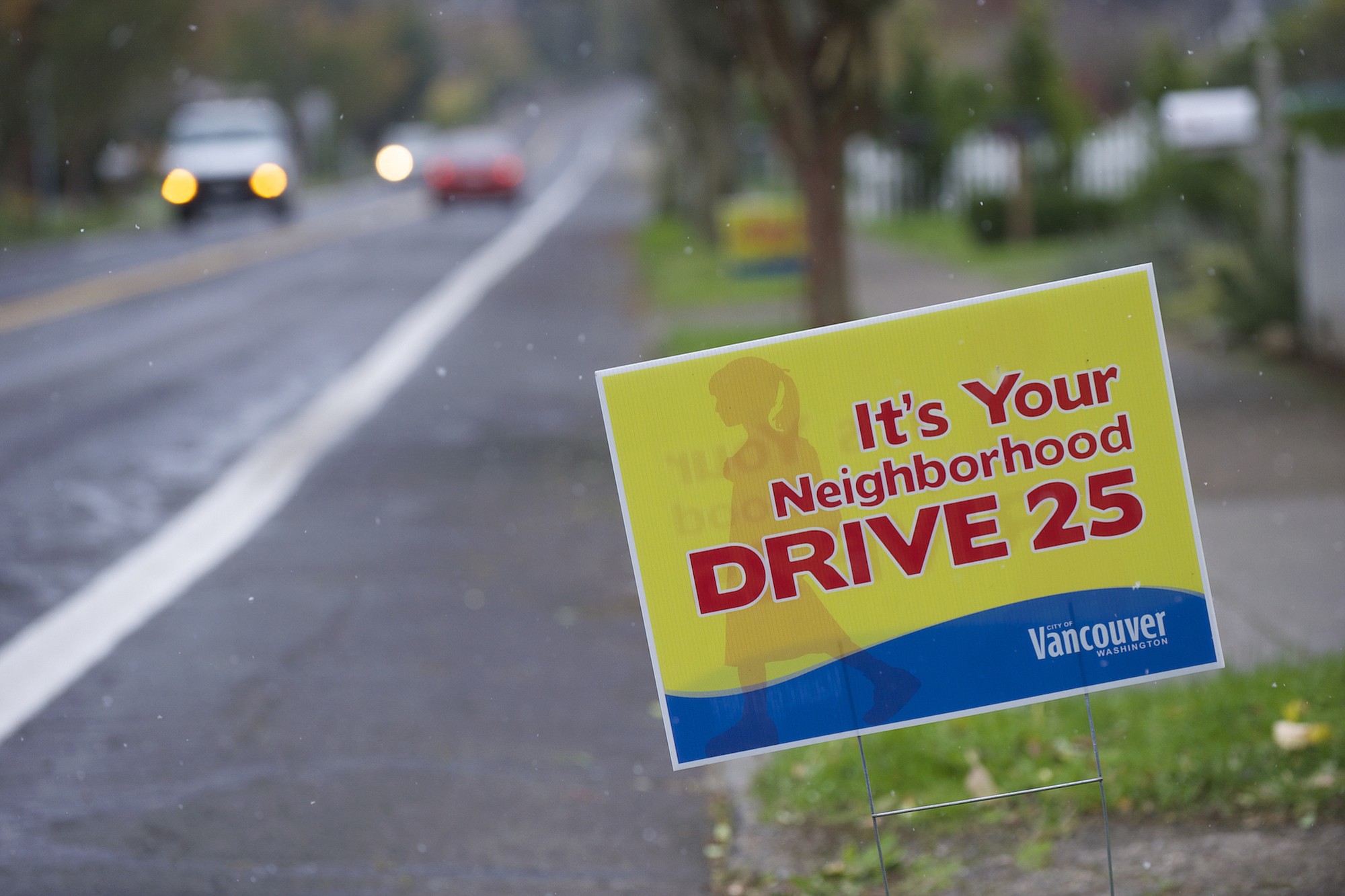For more information about the Neighborhood Traffic Calming Program, including access to resources and yard sign request forms, visit www.cityofvancouver.us/publicworks/page/neighborhood-traffic-calming-program
Motorists driving along East Evergreen Boulevard are now welcomed to the Edgewood Park Neighborhood with brightly colored signs featuring friendly reminders.
“It’s your neighborhood. Drive 25.”
“Slow down. Watch for children.”
“What’s your hurry?”
“Check your speed.”
The signs dot Evergreen Boulevard, a main thoroughfare in the neighborhood, to remind drivers to ease off the accelerator and obey the posted 25 mph speed limit. And they’re popping up in neighborhoods across Vancouver.
The signs were created by the city of Vancouver’s Neighborhood Traffic Calming Program — a joint effort between the city and the Neighborhood Traffic Safety Alliance. The yard signs are among several resources the program is offering to residents within city limits.
“The idea is to get the signs out and make the streets safer for the pedestrians and other folks who use the streets,” said Ross Montgomery, chairman of the Neighborhood Traffic Safety Alliance. “What I’ve heard back is, yes, it’s making a positive difference.”
Each city-recognized neighborhood association can obtain eight of the colorful signs for use along their neighborhood streets. People living within city limits can also request one or two signs to place in their yards.
The signs are designed to be placed on private property, within front and side yards, and to educate and create awareness.
The city printed 1,000 yellow and blue signs with bright red lettering. City officials distributed 600 of the yard signs since they began passing them out a month and a half ago, said Jennifer Campos, a city senior planner.
“We weren’t sure what kind of response we were going to get,” Campos said. “The feedback has been really positive.”
Because the signs have been so popular, the city is planning to order more — perhaps with different phrases, she said.
Montgomery recruited a few people who live along Hearthwood Boulevard in his neighborhood to put signs in their yards. “It’s just a reminder to people that there are people out and about on the streets even in winter,” he said.
The signs are noticeable to drivers, but, in his neighborhood, they plan to move the signs along the heavily traveled arterial roads often so they don’t become part of the scenery for passing motorists, Montgomery said.
Traffic calming tools
The signs are for residents to use to quickly address concerns in their neighborhoods, Campos said. This year, the traffic calming program tried to focus more on creating relatively inexpensive tools and opportunities for residents, she said.
“We don’t have the resources to do the larger projects that we did in the past,” she said.
In addition to the yard signs, residents can apply to use a portable city speed trailer in their neighborhoods to remind drivers of speed limits. Murals have also been a popular option in some neighborhoods, Campos said.
“We’re looking for ways we can maybe expand or enhance the program,” she said.
Next year, the program will accept applications for radar feedback signs, which would be permanently installed in the selected neighborhood, Campos said.
The program is also continuing to fund larger neighborhood projects.
Later this year, the Neighborhood Traffic Safety Alliance and the city will decide on $160,000 worth of traffic calming projects to fund. The city received 19 applications from neighborhoods for various projects. They’ve whittled it down to 11 applications and will select several for funding.
In 2013, the program funded four projects totaling $103,000.
The future of the program, which launched in 2013, was uncertain. But during the 2015-16 budgeting cycle, the program was added to the general public works budget, Campos said.
“It’s become an established program we’ll have ongoing now,” she said.





